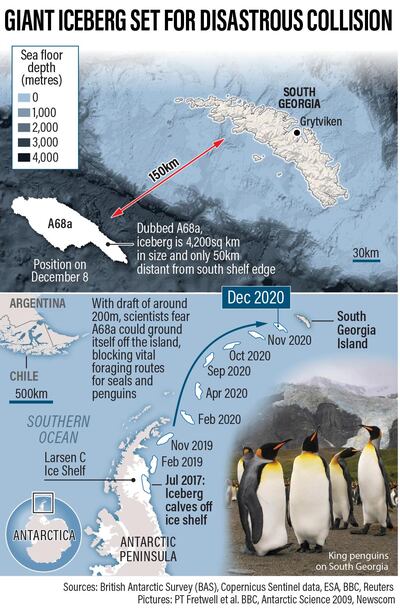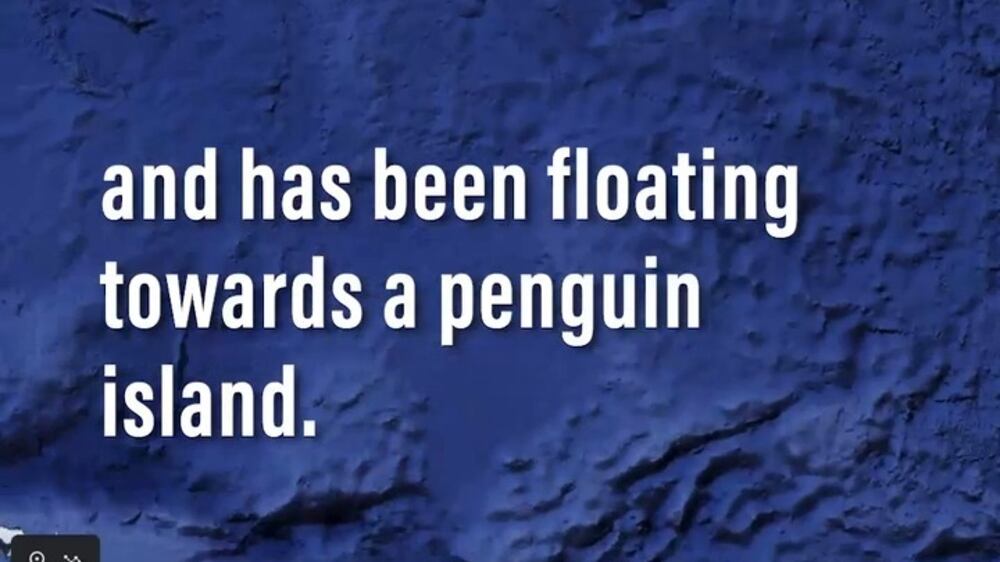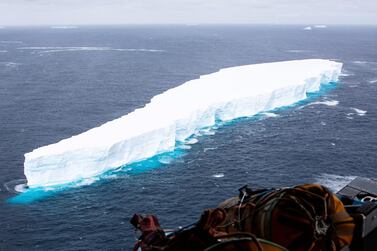Scientists will set off next month on a research mission to study the effects of a giant iceberg on the wildlife and marine life on a sub-Antarctic island.
The huge iceberg – the size of Singapore, Luxembourg or Delaware – has been floating north since it broke away from Antarctica's Larsen C ice shelf in 2017. It is now about 75 kilometres from the island of South Georgia, and scientists are concerned about the risks it poses to wildlife in the area if it grounds near the island.
South Georgia is home to colonies of tens of thousands of penguins and six million fur seals, which could be threatened by the iceberg during their breeding season. The waters near the island are also one of the world's largest marine protected areas and are home to more marine species than the Galapagos Islands.
The research ship James Cook is expected to depart from the Falkland Islands for the iceberg in late January. Two underwater robotic gliders will be used by the scientists and spend several months collecting data to help investigate the impact of freshwater from the melting ice on the region.
The iceberg – named A-68a – is travelling at varying speeds depending on local conditions, but at its fastest was travelling about 20 kilometres a day.

Geraint Tarling, an ecologist at the British Antarctic Survey, said the iceberg will “cause devastation to the sea floor by scouring the seabed communities of sponges, brittle stars, worms and sea-urchins, so decreasing biodiversity”.
“These communities help store large amounts of carbon in their body tissue and surrounding sediment. Destruction by the iceberg will release this stored carbon back into the water and, potentially, the atmosphere, which would be a further negative impact," he said.
Povl Abrahamsen, who is leading the mission, said it normally takes years to plan such marine research trips. But the mission is made possible because officials recognise the urgency to act quickly.
“Everyone is pulling out all the stops to make this happen,” he said.
The 4,200 square kilometre iceberg had been sliding towards the open ocean for more than two years until it hit the powerful circumpolar current that circles the continent.
The largest icebergs
There have been few larger icebergs in recent history, the biggest being B-15, which measured 11,000 square kilometres when it broke from Antarctica’s Ross Ice Shelf in March 2000.
Whether climate change was directly, or partially, responsible for destabilising Larsen C is a matter of debate, said Ted Scambos, a senior research scientist at the University of Colorado in Boulder.
Scientists have limited understanding of how the ice behaved historically, because satellite monitoring began only in recent decades, he said. And the continent is influenced by other variables, including strong winds and weather patterns in the tropics.
Antarctica is one of the fastest-warming places on Earth. Records show South Pole temperatures rose at three times the rate of the global average over the past three decades.








